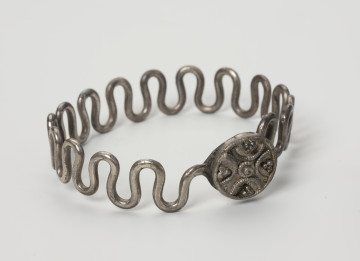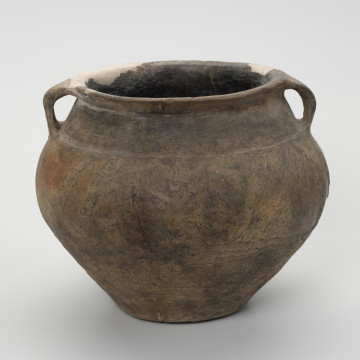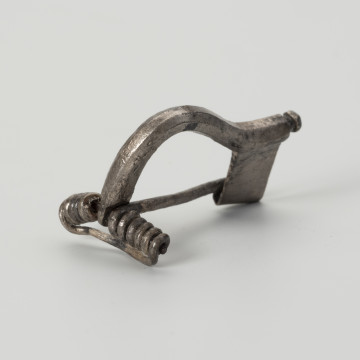
Wave bracelet
150 — 200
National Museum in Szczecin
Part of the collection: Antiquity
A silver bracelet with snake heads at both terminals and four rows of beaded lines along the bow, its terminals decorated with punch and filigree, and wide ornamented flanges. A bangle of this nature was probably valuable in the 2nd half of the 2nd century, as evidenced by traces of repair after the bow was broken. It was part of grave goods in a female inhumation grave, covered by a barrow, presumably deceased at an advanced age. Barrow no. 22, located in a cemetery in Gronowo, Drawsko district (German name: Groß Grünow, Kr. Dramburg), covered a total of five inhumation graves, of which grave no. 4, described above, contained very rich grave goods. It included an almost identical snake-head silver bracelet and two silver wire wave bracelets, six ornamented silver and bronze fibulae. Moreover, the burial goods included a fragment of a bronze pin and belt buckle, a pottery vessel, two gold wire beads, and a gold S-shaped clasp decorated with filigree. There were also artefacts related to weaving: a decorated clay spindle whorl, fragments of a distaff with bronze fittings and a bronze hooked pin. Based on the results of the anthropological analysis, a female, possibly elderly, was buried in grave 4. The barrow cemetery in Gronów near Drawsko Pomorskie is one of the most important sites of the Wielbark culture in Pomerania. It was discovered in 1881. The first explorer of the necropolis was Pastor Plato from Złocieniec, who carried out amateur research in 1881, 1887, and 1890. Another grave assemblage was discovered in 1926 during the construction of a road to Złocieniec. It was an inhumation burial provided with Roman imports. Between 1939 and 1940, several pit graves were encountered during the construction of the Berlin-Szczecin-Gdańsk motorway. These were excavated by local archaeologists Heinz Hinz and Dr Faust. Shortly afterwards, the area of the cemetery was reforested, as the construction of the aforementioned motorway was abandoned between 1940 and 1941. Methodical excavations during which the bracelet was discovered did not take place until between 1973 and 1977 under the supervision of Ryszard Wołągiewicz from the museum in Szczecin. In total, 56 urned cremations and inhumations including 49 covered by barrow mounds were discovered in Gronów. Bartłomiej Rogalski
Author / creator
Object type
snake bracelet
Technique
casting, forging, filigree, punching
Material
silver
Origin / acquisition method
field research
Creation time / dating
Creation / finding place
Owner
Muzeum Narodowe w Szczecinie
Identification number
Location / status

150 — 200
National Museum in Szczecin

150 — 200
National Museum in Szczecin

150 — 250
National Museum in Szczecin
DISCOVER this TOPIC
Museum of King Jan III's Palace at Wilanów
DISCOVER this PATH
Educational path